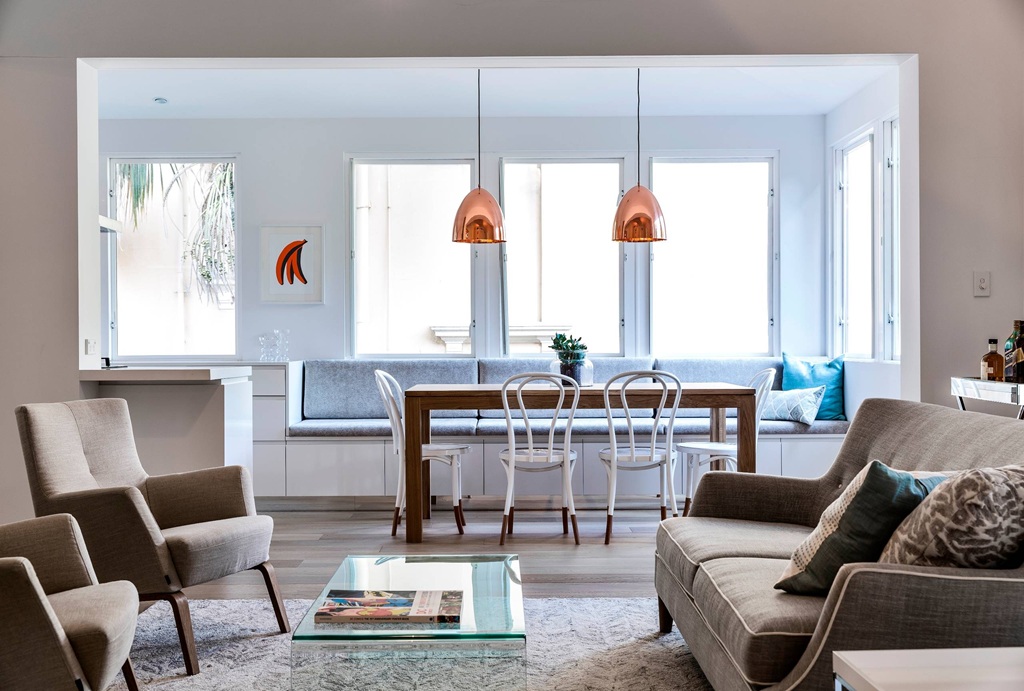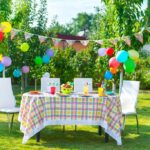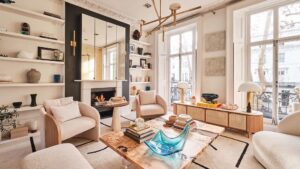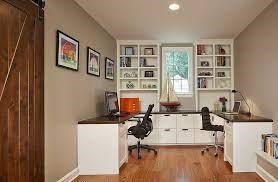
In an era where living spaces often feel increasingly compact, finding furniture solutions that are both stylish and space-efficient is paramount. Whether you’re navigating the layout of a cozy apartment, optimizing an open-plan living area, or simply looking to create a more intimate dining experience, the humble banquette system is emerging as a hero solution. Far from being just a retro diner feature, modern banquette seating offers incredible versatility, comfort, and, most importantly, a brilliant way to reclaim valuable square footage. As we move through 2025, the trend towards multi-functional, comfortable, and personalized dining spaces makes banquettes more relevant than ever. Let’s dive into why this clever seating arrangement might be the perfect addition to your home.
What Exactly is a Banquette System?
At its core, banquette seating refers to a bench, often upholstered and typically built-in or fixed against a wall, paired with a dining table. This setup is frequently complemented by freestanding chairs on the opposite side or ends of the table. Think of it as creating a cozy booth or nook right in your home. While traditionally associated with kitchen breakfast nooks, banquettes are incredibly adaptable and can be found in formal dining rooms, living areas, hallways, and even bay windows. The key characteristic is the fixed bench element, which distinguishes it from a dining set consisting solely of movable chairs. Variations include booth seating (often two benches facing each other) and freestanding benches designed to mimic the banquette feel with more placement flexibility.
The Space-Saving Superpower: Why Choose a Banquette?
The primary allure of banquette seating, especially in 2025’s design landscape focused on functionality, is its exceptional space efficiency. Traditional dining arrangements require significant clearance around the table – not just for the chairs themselves, but also for pulling them out and walking behind them. Banquettes brilliantly eliminate this need on at least one or two sides. By tucking the bench snugly against a wall or into a corner, you instantly free up precious floor space.
This makes banquettes ideal for:
- Small Kitchens/Dining Areas: They allow you to fit a comfortable dining spot where a standard table and chairs might feel cramped or impossible.
- Awkward Corners: L-shaped banquettes transform often-underutilized corner spaces into functional and inviting nooks.
- Open-Plan Layouts: A banquette can help define the dining zone within a larger space without visually cluttering the area. It creates a sense of intention and delineates the eating area from living or cooking zones.
- Maximizing Seating: Generally, you can fit more people onto a bench than you can with individual chairs occupying the same length. Squeezing in an extra guest or accommodating kids becomes much easier.
Essentially, banquettes allow you to push the dining table closer to the wall, improving traffic flow and making the entire room feel more spacious and organized.
Beyond Efficiency: Unpacking the Added Benefits
While space-saving is a major draw, the advantages of banquette seating extend far beyond mere practicality. They offer a unique blend of comfort, style, and function that traditional dining sets often lack.
- Storage Goldmine: This is a huge bonus! The base of a built-in banquette is prime real estate for hidden storage. Options include lift-up bench tops (revealing open space perfect for bulky or infrequently used items like seasonal decor, large serving dishes, or kids’ toys) or integrated drawers for easier access to linens, placemats, craft supplies, or even discreetly housing tech like Wi-Fi routers and speakers. This built-in storage keeps clutter at bay and maximizes the utility of the furniture footprint.
- Comfort & Coziness: There’s an undeniable sense of intimacy and comfort associated with banquette seating. Upholstered benches invite lingering, transforming the dining area into a multi-functional hub. It becomes a comfortable spot for morning coffee, casual family meals, kids’ homework sessions, board games, or even a cozy place for guests to chat while you cook. Compared to often harder dining chairs or less supportive bar stools, a well-padded banquette offers superior lounging potential.
- Aesthetic Versatility: Forget the outdated notion that banquettes belong only in retro diners. Today’s banquettes can be designed to complement virtually any interior style. From sleek, minimalist benches in a modern apartment to rustic wood finishes in a farmhouse kitchen, or plush, deep-buttoned velvet in a traditional dining room, the possibilities are endless. Material choices (wood, MDF), upholstery fabrics (think durable performance fabrics, classic leather, patterned textiles reflecting 2025’s trend for bold choices), and design details (fluted backs, plain finishes, contrasting piping) allow for complete personalization. The trend of mixing styles – perhaps a contemporary banquette with vintage chairs – adds further character.
- Durability: Built-in banquettes, being fixed in place, often withstand wear and tear better than dining chairs that are constantly moved, bumped, and scraped. Investing in quality construction and durable upholstery ensures a long-lasting seating solution.
Exploring Banquette Types for Every Space
Banquettes aren’t a one-size-fits-all solution. Different configurations cater to various layouts and needs:
- L-Shaped Banquette: The classic corner solution. Perfect for maximizing seating in kitchens or dining rooms by utilizing two adjacent walls. Creates a cozy, contained feel.
- Straight Bench Banquette: Simple and versatile. Can run along a single wall, fit into an alcove, sit under a window, or even be integrated along the back of a kitchen island. Works well in smaller nooks or longer, narrower spaces.
- U-Shaped Banquette: Creates a distinct booth-like enclosure, often wrapping around three sides of a table. Excellent for larger families, entertaining, or creating a very defined dining zone. Requires more space than L-shaped or straight options.
- Freestanding Banquette: Essentially a bench designed to look like a banquette but isn’t fixed to the wall. Offers more flexibility in placement and can be moved if needed, but may offer less storage potential and a less integrated look than built-ins.
- Built-In Banquette: Custom-designed and constructed to fit a specific space perfectly. Offers the most seamless integration with your home’s architecture (ideal for bay windows or custom nooks) and maximizes storage opportunities. Often involves professional installation. Bespoke options allow for complete tailoring to your exact dimensions and style preferences.
Designing Your Perfect Banquette Nook
Creating a successful banquette involves careful planning, particularly regarding dimensions and materials.
-
Measurements are Key:
Comfort is crucial. Stick to standard dining ergonomics:
- Seat Height: Around 45cm (18 inches) including the compressed height of your cushion (cushions typically add 5-10cm or 2-4 inches).
- Seat Depth: Minimum 45cm (18 inches). If adding back cushions or a built-in backrest, aim for 55-60cm (22-24 inches) total depth to accommodate them without sacrificing seating space.
- Table Height: Standard dining table height is 71-76cm (28-30 inches).
- Seat-to-Table Clearance: Allow 23-30cm (9-12 inches) between the top of the seat cushion and the bottom of the table apron (if any) for comfortable legroom.
- Table Overlap: The table edge should slightly overlap the bench seat by about 8-13cm (3-5 inches) so diners don’t have to lean too far forward.
- Length Per Person: Allocate at least 53-61cm (21-24 inches) of bench length per person for comfortable seating.
- Entry Space: If possible, extend the banquette bench about 30cm (12 inches) beyond each end of the table to make sliding in and out easier.
-
Material Matters:
- Frame: Built-ins are often constructed using 2×4 lumber for framing and plywood or MDF for sheathing and the base.
- Upholstery: Durability is key, especially in high-traffic areas or homes with kids and pets. Consider performance fabrics (stain-resistant, easy-clean), vinyl, or leather. Comfort comes from adequate padding (high-density foam is recommended). Style-wise, coordinate with your overall decor – choose solid colors, textures, or bold patterns aligning with 2025 trends. Sustainability is also a growing factor, with options like eco-friendly fabrics and reclaimed wood frames gaining popularity.
-
Table Talk:
The right table is critical for banquette functionality.
- Base: Pedestal bases (single or double) are highly recommended. They eliminate table legs at the corners, making sliding in and out much easier. Avoid tables with legs at the corners near the bench side.
- Shape: Rectangular tables often pair well with straight or L-shaped banquettes. Round or oval tables can soften the look, work well in smaller spaces, and pair nicely with curved or U-shaped banquettes, but ensure those seated at the ends can still comfortably reach the table.
- Size: Ensure the table size is proportionate to the banquette length and allows for comfortable overlap and clearance.
-
Lighting & Ambiance:
Define your banquette nook with dedicated lighting. A pendant light centered over the table, stylish wall sconces, or even under-bench LED lighting can enhance the mood and functionality. Maximize natural light by positioning the banquette near a window if possible.
-
Storage Integration Details:
Plan how storage will be accessed. Lift-up tops on piano hinges or sturdy cabinet hinges are common. Drawers offer easier access but may require more complex construction and space for opening.
Installation Insights: DIY or Hire a Pro?
Building a banquette, especially one with storage, can be a rewarding DIY project if you have woodworking skills and the right tools (circular saw, drill, level, nail gun, sander). The basic process involves building a frame (usually with 2x4s), attaching legs or building a solid base, sheathing the frame (with plywood or MDF), adding trim for a finished look, constructing the top/lid (often using thicker plywood), installing hinges for storage access, and finally, caulking, sanding, and painting or staining.
However, achieving a truly professional, seamless finish, especially with complex L or U shapes, built-in backrests, or integrating into tricky spaces like bay windows, can be challenging. If you lack the time, tools, or confidence, hiring a carpenter or a specialist furniture maker is a worthwhile investment to ensure a durable, well-fitting, and aesthetically pleasing result.
Related: Living Room Reimagined: Create a Stylish and Functional Space You’ll Love
A Balanced View: Potential Banquette Drawbacks

While banquettes offer numerous benefits, it’s important to consider potential downsides:
- Reduced Flexibility: Built-in banquettes are permanent fixtures. Unlike chairs, you can’t easily rearrange them if you want to change your room layout.
- The ‘Shimmy’: Getting in and out, particularly for people seated in the middle of a long bench or in the corner of an L-shape, requires some sliding. This might be inconvenient for some individuals, including those with mobility issues.
- Cleaning: Cleaning under banquettes with legs can be tricky. Boxed-in bases are easier to clean around but ensure the base material can withstand occasional mopping or vacuum bumps. Upholstery requires regular cleaning appropriate for the fabric type.
- Upfront Cost: While a DIY banquette can be cost-effective, custom-built and professionally installed banquettes can represent a significant investment compared to a standard dining set.
- Ergonomics: While comfortable for dining and lounging, a simple bench might not offer the same level of individual ergonomic back support as a well-designed dining chair, unless a supportive backrest is integrated into the design.
2025 Trends & Styling Your Banquette
Banquette seating aligns perfectly with several key interior design trends for 2025:
- Multi-Functionality: Banquettes embody the desire for hardworking furniture that serves multiple purposes – dining, working, relaxing, storing.
- Sustainability: Choose reclaimed wood for the frame or base, and opt for sustainable, eco-friendly upholstery fabrics.
- Mixing Styles: Pair a sleek, modern banquette bench with vintage-inspired chairs or a rustic wooden table for an eclectic look.
- Bold Choices: Embrace vibrant colors or eye-catching patterns for the upholstery to make the banquette a statement piece. Rich jewel tones and textured fabrics are on-trend.
- Comfort Focus: Prioritize plush cushioning and perhaps an integrated, angled backrest for enhanced comfort during longer periods of sitting.
- Biophilia: Position your banquette near a window to maximize natural light and views. Incorporate natural materials like wood and pair with nearby indoor plants.
- Seamless Integration: In open-plan homes, use banquettes to create a cohesive flow, potentially matching cabinetry finishes or materials used elsewhere in the space.
Styling Ideas:
- Modern: Clean lines, neutral upholstery (grey, white, black), minimal cushions, paired with a sleek pedestal table and acrylic or metal chairs.
- Farmhouse: Beadboard or shiplap detailing on the base, natural wood top or frame, simple check or grain sack stripe cushions, paired with a rustic wood table.
- Traditional: Deep button-tufting or elegant fluting on the backrest, richer fabric like velvet or leather, potentially with decorative legs if freestanding, paired with a classic wood table.
- Coastal: Light wood or white painted finish, blue and white striped or nautical-themed cushions, woven textures.
Related: Creating a Useful Space to Work From Home
People Also Ask (FAQs)
How much space do you need for a banquette?
You need enough depth for comfortable seating (min. 45cm/18″, ideally 55-60cm/22-24″ with back cushions), enough length per person (53-61cm/21-24″), and appropriate clearance between the seat and table (23-30cm/9-12″). The overall footprint depends on the configuration (straight, L, U) and number of seats.
Are banquettes comfortable?
Yes, when designed correctly with adequate seat depth, supportive padding (like high-density foam), and ideally a backrest (either built-in or using comfortable cushions), banquettes can be very comfortable for dining and lounging.
Can you add storage to any banquette?
It’s easiest to incorporate storage into built-in designs from the start. Adding storage to an existing freestanding bench might be possible but could require significant modification. Built-ins naturally lend themselves to lift-up tops or drawers in the base.
What is the best table shape for a banquette?
A table with a pedestal base is highly recommended to allow easy sliding access. Rectangular tables often maximize seating with straight or L-shaped banquettes. Round or oval tables can work well, especially with U-shapes or to soften corners, but ensure reachability for all diners.
Are banquettes good for families?
Yes, they are often a great choice. They maximize seating in potentially limited space, are great for squeezing kids together, offer valuable storage for toys and supplies, and durable, easy-clean upholstery options are readily available. Consider ease of access for younger children.
Should the banquette be longer than the table?
Ideally, yes. Extending the bench about 30cm (12 inches) beyond each end of the table makes it easier for people to sit down first before sliding into place, especially for the end seats.
Conclusion
Space-saving banquette systems are far more than just a clever use of square footage; they are a versatile design solution that brings comfort, style, and incredible functionality to the heart of the home. Offering tailored seating, invaluable storage, and a cozy atmosphere, banquettes adeptly meet the demands of modern living, particularly the push towards multi-functional spaces seen in 2025. Whether you’re designing a breakfast nook, optimizing a dining area, or simply creating an inviting corner to gather, the potential of a well-planned banquette is undeniable. By considering your space, needs, and style, you can create a personalized, efficient, and welcoming hub that enhances both the practicality and the personality of your home for years to come.







